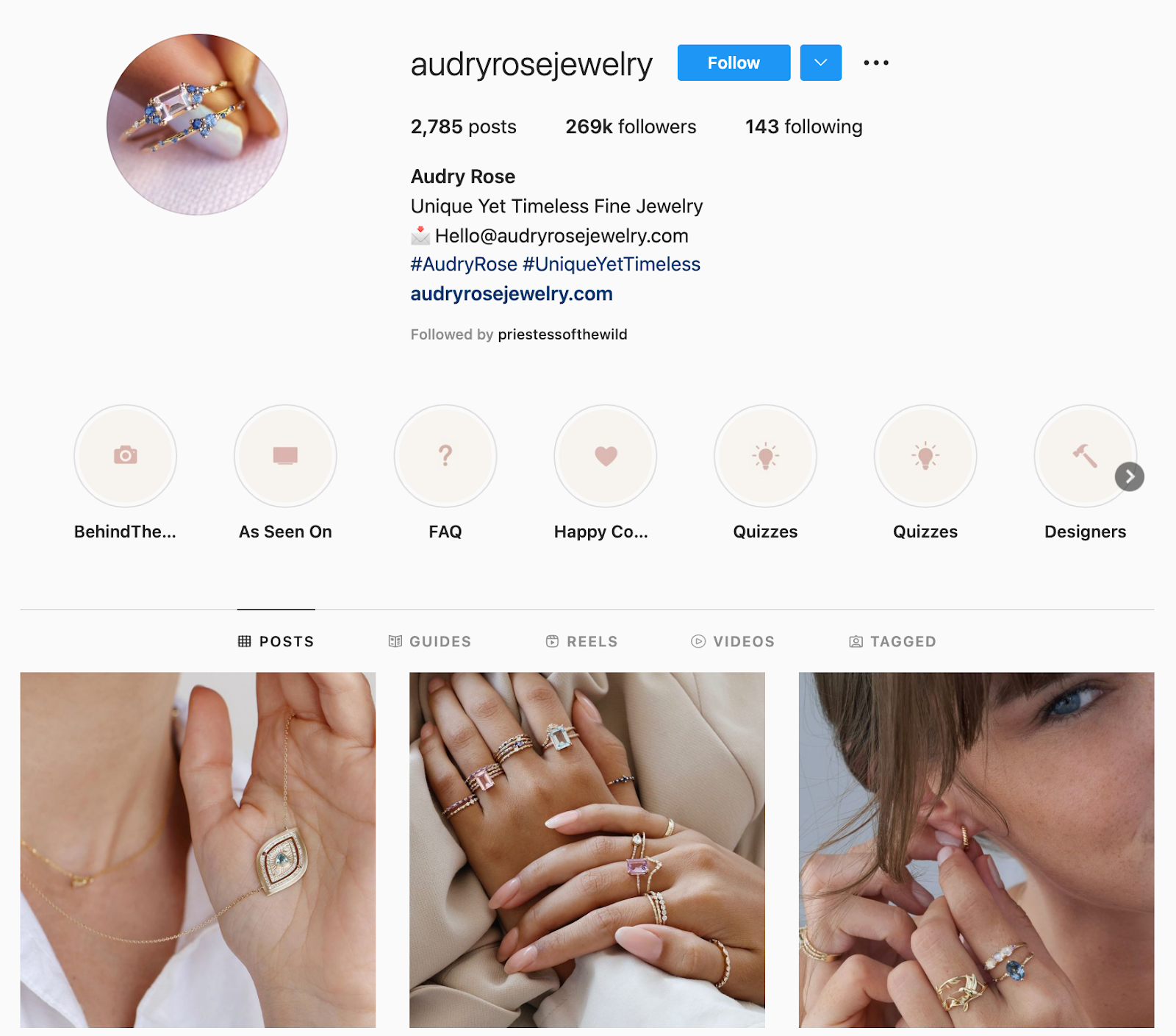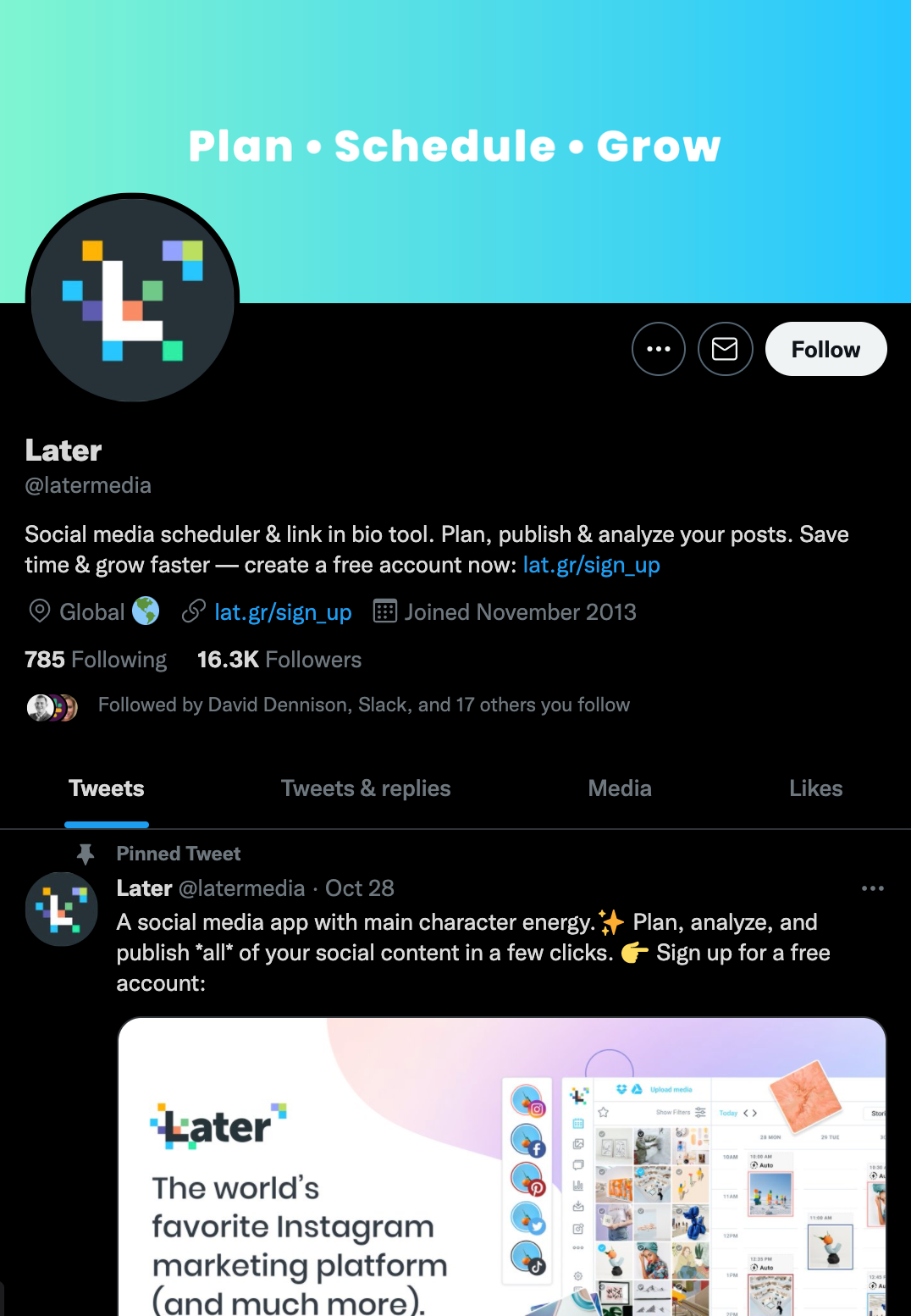Branding is important across all areas of your business.
Creating a strong, branded experience on social media can help your business stand out. It can capture user interest, gain customers, and establish brand recognition and loyalty. Whether you’re refining your own brand or your client’s, you want to make sure that your brand truly stands out from the competition.
In this post, we’re going to look at 7 decisive steps you can take to improve your business’s social media branding to take advantage of all these benefits.
What Is Branding & Why Is It Important On Social Media?
Your brand consists of the specific look, feel, and experience you want your audience to come away with each time they encounter you online.
Branding encompasses all aspects of your organisation’s aesthetic and customer experience. This includes your voice, tone, colour scheme, graphic design, fonts, and even the way your team interacts with your audience.
When you bring the elements of your brand into the social media space, that’s just another way you’re extending that customer experience to your audience. It’s important to be consistent with your branding on social media so you don’t provide them with a disjointed experience.
Instead, your social media presence should feel like a natural extension of your brand.
Examples Of Strong Social Media Branding
You can find great examples of strong branding everywhere.
For example, Audry Rose Jewelry presents an approachable, appealing brand aesthetic for its unique jewellery line. Their soft colours and calm, pleasant brand voice make scrolling through their social media feeds an enjoyable experience.

While some brands lean heavily on imagery to reinforce their brand’s mood and overall feel, others rely more on brand voice.
The quick, biting wit of Wendy’s social media brand stands in sharp contrast to Audry Rose Jewelry’s sleek aesthetic. Wendy’s appeals to its followers through lively banter and snarky exchanges with its followers and other brands. Those other brands are competitors in many cases, which makes it that much more entertaining.
Whether or not you’re a fan of the fast-food chain, taking a detour through Wendy’s Twitter feed is endlessly amusing. Check out this exchange between Wendy’s and Hot Wheels, which became an instant meta-analysis of branding all on its own.

Sometimes, a brand is primarily informed by the value it provides through its content.
For instance, Social Media College’s brand is warm and informative, taking a mentorship-like approach. We offer in-depth education to our audience while maintaining an open and welcoming online presence.

Many users consider your social media to be a primary touchpoint for your brand. When they encounter you on a social platform, that may be their first experience with your business.
This is important to keep in mind, especially since you only have 7 seconds to accurately convey your brand’s impression. That’s how quickly people decide what they think of your brand online.
Ultimately, social media is where you’re supposed to showcase the most authentic presentation of your brand.
People often discover brands on social media. It's also possible that they could find you elsewhere and scout you on social platforms before making a purchase. You want to make sure your presence is not only authentic but uniform, too.
1. Develop A Brand Guide For Your Team
Developing a strong brand guide for your team will go a long way toward building that uniform presence online.
Your brand guide consists of your unique selling proposition (USP), plus your mission, vibe, and brand voice.
A USP is what makes you unique and it focuses on the core value your brand offers. It explains what sets you apart and why your customers choose your brand over others. Essentially, your USP ties directly into your brand because your brand should clearly articulate it.
To flesh out your brand guide and build on that USP, consider what sort of “vibe” you’re going for. Is it funny, good-natured, sarcastic, cool, or professional?
Next, figure out your brand’s priorities. Do you value sustainability? Luxury? Affordability? Convenience?
Answering these questions will inform and define your brand voice.
Defining and articulating your brand voice to your team is of utmost importance. That voice will need to be clear across all touchpoints, including social media. Make sure you’re using the right brand language on every platform.
What This Looks Like
A mental health company might specify that team members never use derogatory words like “crazy” to describe mental illness. Instead, the style guide will recommend phrases like “in need of mental health care” or “affected by potential mental health illnesses.”
Health and wellness brands might require their team to avoid definitive statements, instead opting to say “may” or “can.” For example, “This medication may help individuals with depression,” instead of, “This medication will help them.” They may also want you to say “people” or “individuals” instead of “patients.”
Having a well-defined brand style guide means that you’ll be able to keep your brand consistent online. That’s important because consistency can actually boost your revenue--by as much as 33%.
Creating and presenting that distinct brand, both on your website and social media accounts, will set your business apart from competitors. This will prevent your brand from becoming interchangeable with similar ones and can help you stand out and retain customers.
Your brand style should be written and easily accessible so everyone on the team can refer back to it regularly.
2. Determine Brand Colours & Create Image Guidelines
Now that you fully understand what you’re going for in terms of brand voice and vibe, you can use that information to choose your brand colours and create image and design guidelines.
Consistently using the same branded colours and general styles/fonts can help increase brand recognition. It can also give users a more consistent brand experience
Your visual aesthetic, including colours, fonts, and graphic design, can be included as part of your brand style guide to keep your team on track. Be sure to include hex colours in your guide so your team can always be sure to use the right web-optimised colours in your designs.
If you’ve already got a logo for your brand, you can tie those colours directly into your brand aesthetic. You can also choose one or two complementary colours, plus one or two contrasting colours.
Next, set your image guidelines. For example, do you always want to incorporate your logo on images? What sort of pictures and images will you be using? Is there anything you don’t want to use?
Think about style and filters, too. Some accounts have hyper-branded accounts with distinct Instagram galleries. You can select quarterly or seasonal themes, or keep a consistent theme year-round.
What This Looks Like
One great example of colour and design consistency across online platforms is Breadcrumbs.io. The bright yellow aesthetic is present not only on their website but also on their social accounts. Take a look at how they use their unique designs and colours across multiple platforms for strong social media branding.



The bright colours in Breadcrumbs’ aesthetic make it instantly recognisable to users, which heightens brand awareness and recognition. This is backed up by data from the University of Loyola, which indicates that colour is capable of raising a user’s brand recognition by 80%.
3. Create Branded Video Cover Art Templates
Going to include videos in your social media content? Having consistent video cover art across your social media branding can help. Especially on YouTube.
When you stick to your brand’s visual identity in your video cover art, that makes your video content instantly recognisable to your audience. Take a look at the cover art designs on the Social Media College YouTube account for a great example.

Notice how every thumbnail isn’t exactly the same, but the colours and style are consistent with the SMC brand.
You can create multiple templates for your YouTube videos that align with your brand style guidelines, including your colour and font. That way, you can have a little variety while maintaining consistency on your channel.
As an added bonus, your followers will recognise your videos no matter where they encounter them. This may be on YouTube itself, or on another platform that displays the thumbnail.
Tools such as Snappa or Canva can help make the process of creating video cover art templates easy.
4. Choose A Single Logo For All Account Profiles
When you set up your social media account profiles, choose a single logo to use everywhere.
Keeping your logo consistent, and your username as consistent as possible will help increase the overall uniformity and brand recognition across your organisation. When your followers encounter you on social media, they’ll immediately know it’s you because your logo is consistent and recognisable.
Notice how the social media scheduling platform Later uses a uniform profile picture across all its social channels.




You can also keep your description similar on all platforms, but this is likely to change from one platform to the next, according to best practices.
5. Have One Team Member Check Posts For Brand Voice
Assigning one of your team members to check for brand voice across your posts can help you maintain the consistency you’re going for.
In many cases, it can be a good idea to plug your content into a social media management tool for approval before anything is posted. When you do that, you can have a single team member who knows your brand voice inside and out check the content calendar to make sure everything lines up once or twice a month.
6. Generate Content That Aligns With Your Brand USP
Remember that your social media content isn’t just about posting your products and services. It’s also about conveying your USP in many ways.
Your social media strategy can absolutely incorporate a range of content, both original and curated, that aligns with your USP and resonates with your audience.
Think outside the box and create content that aligns with what your brand is and cares about. For example:
- A jewellery company might share a resource from a repair shop that discusses how to best maintain your jewellery or a diamond guide.
- Fun companies targeting younger audiences can jump in on trending memes and Reels on different platforms to add their take, or leverage Twitter joke threads.
- A company specialising in sustainable energy can share other companies or content with similar values that its followers might appreciate.
7. Have Branded “Scripts” For Private Social DMs
An important aspect of social media branding is to ensure your followers are getting a consistent brand experience at every touchpoint. That goes far beyond your colours, voice, and overall aesthetic--it includes interactions with your team, too.
Beyond the surface-level brand experience, your customer needs to have the same experience when they send your business private messages via your Pages.
If you have customer support personnel, you want to ensure they’re communicating with your followers in such a way that is consistent with your brand. That’s where creating branded “scripts” for private social DMs comes in handy.
Having scripts and basic guidelines for your customer support team or social media manager to follow when they interact with your followers will help them maintain your brand voice. Always have them introduce themselves and use a brand tagline when they initiate a reply.
These customer interactions can also be automated to a certain degree. For example, you can create automatic-response branded greetings when someone reaches out to your Page, letting them know that a team member will be with them shortly.
By developing set guidelines for communication, you can ensure that every customer is treated exactly how you want and in line with your brand’s procedures.
Final Thoughts
Social media branding is a critical part of your organisation’s overall marketing strategy, so it’s important to make it a top priority as you develop your brand. Having set social media guidelines for your brand in place ensures that your team is clear on expectations, and your audience is getting a consistent experience that meets theirs, too.
Having a solid social media brand will help your content creation and marketing processes go more smoothly, whether you’re building out social media content for your own business or creating a social media marketing package for a client. With the right brand components in place and your guidelines set, you’ll be able to create content with ease--and have fun in the process.
Want to learn more about building a strong brand that will carry your business across social media and beyond? You can check out our personal branding course here.


















